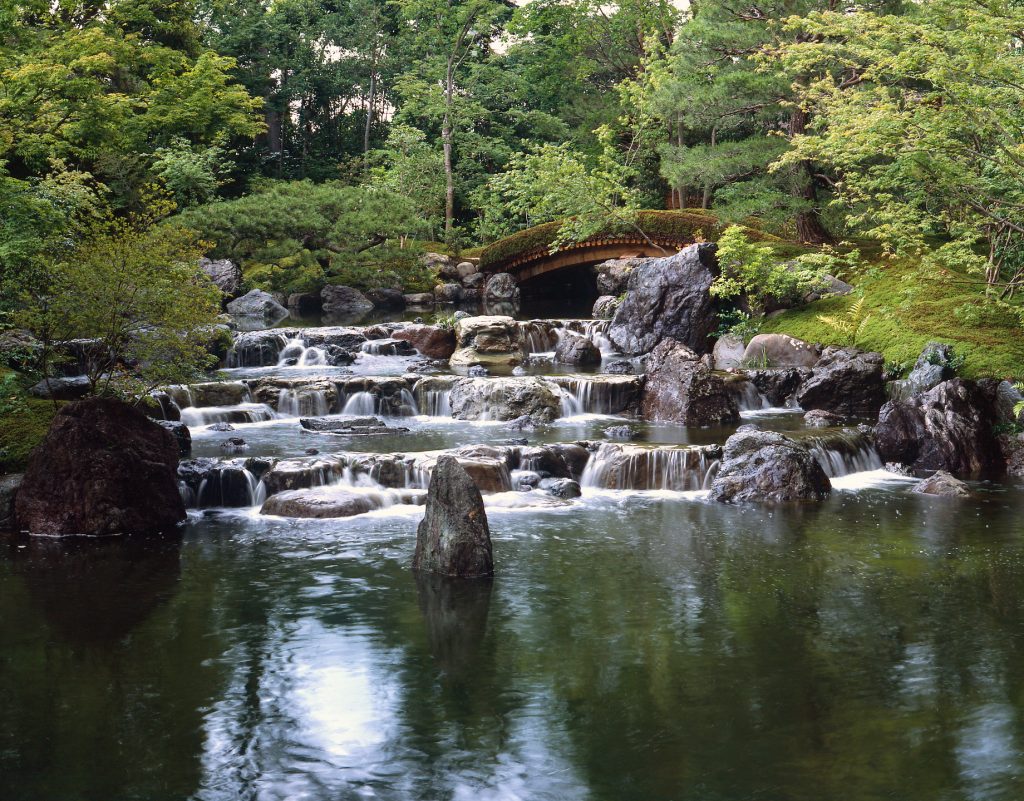
- ARAB NEWS
- 13 Jul 2025

Nader Sammouri
Japanese gardens aren’t just places where flowers and trees can be planted, but rather places that could hold beacons of wisdom that transpose thoughtful philosophical messages.
While visitors may stand in wonderment when watching marvellous works of garden art, it’s profoundness extends beyond mere aesthetics as it aids in the interpretation of oneself and their surroundings.
It is perhaps a mental passage to one’s inner being. It deserves a higher state of pondering and inducing a dialogue with the green space that requires emptying a part of the self to welcome the voice of the garden.
“In the field of art, that includes gardens, there are major differences between Western Europe and Japan. In Western Europe, what you see is everything, and you just have to appreciate and enjoy what you see. However, Japanese art, rooted in Buddhism, is characterized by its cultural characteristics that emphasize spirituality,” said Shunmyō Masuno.
Shunmyō Masuno is the head priest of Kenkō-ji temple and one of Japan’s leading garden designers who has completed various projects in Japan and overseas.
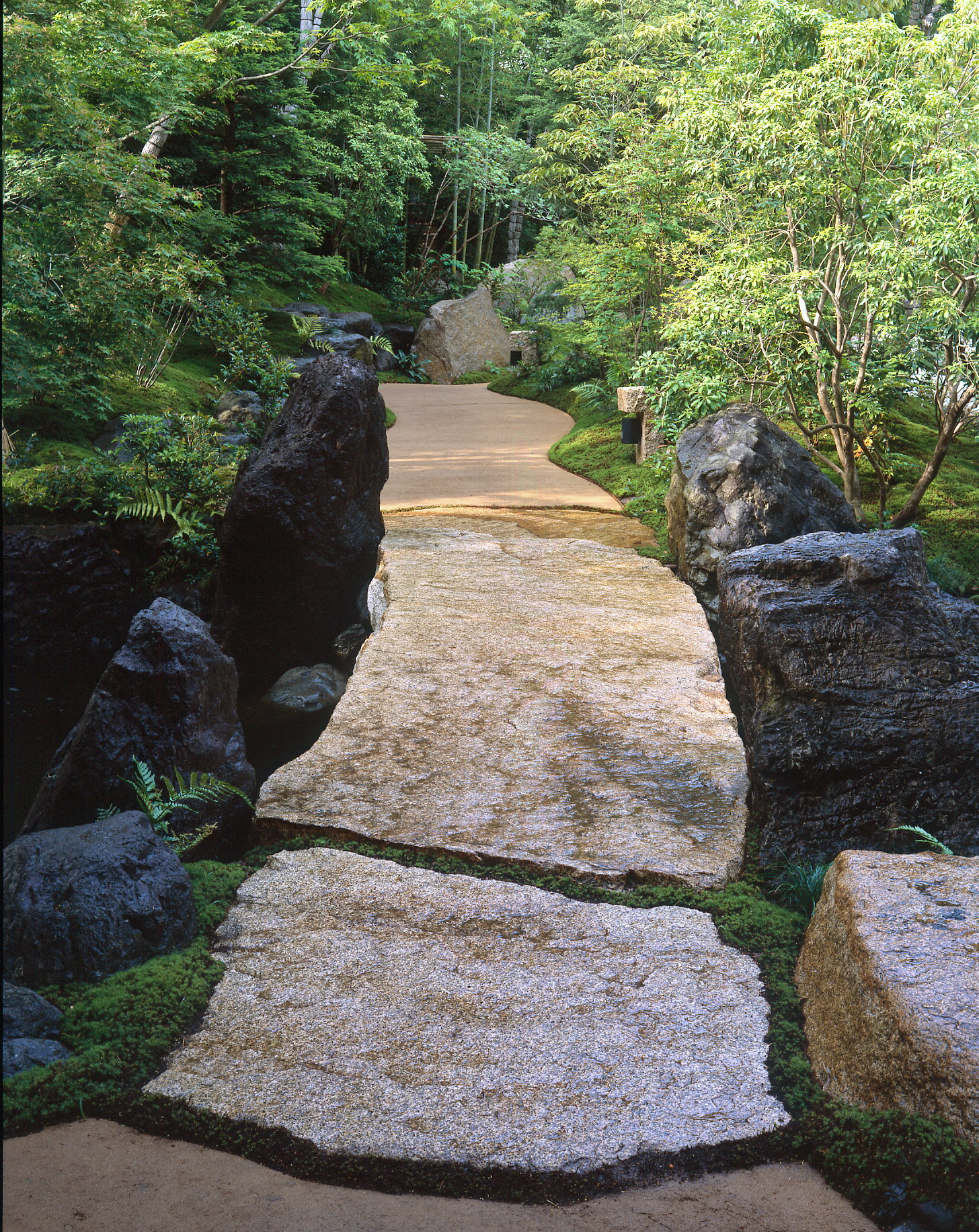 Samukawa shrine garden project in Kanagawa (Shunmyo Masuno)
Samukawa shrine garden project in Kanagawa (Shunmyo Masuno)According to Masuno, the “Zen Garden” is a typical example of how spirituality is emphasised in certain works of art. One of the main characteristics of Japanese art is that their visible aspect forms a minor representation of the degree of spiritually that is incorporated within the artistic expression.
Those who appreciate Japanese art are required to predict the thought behind it, making it subjective to the viewer’s interpretation.
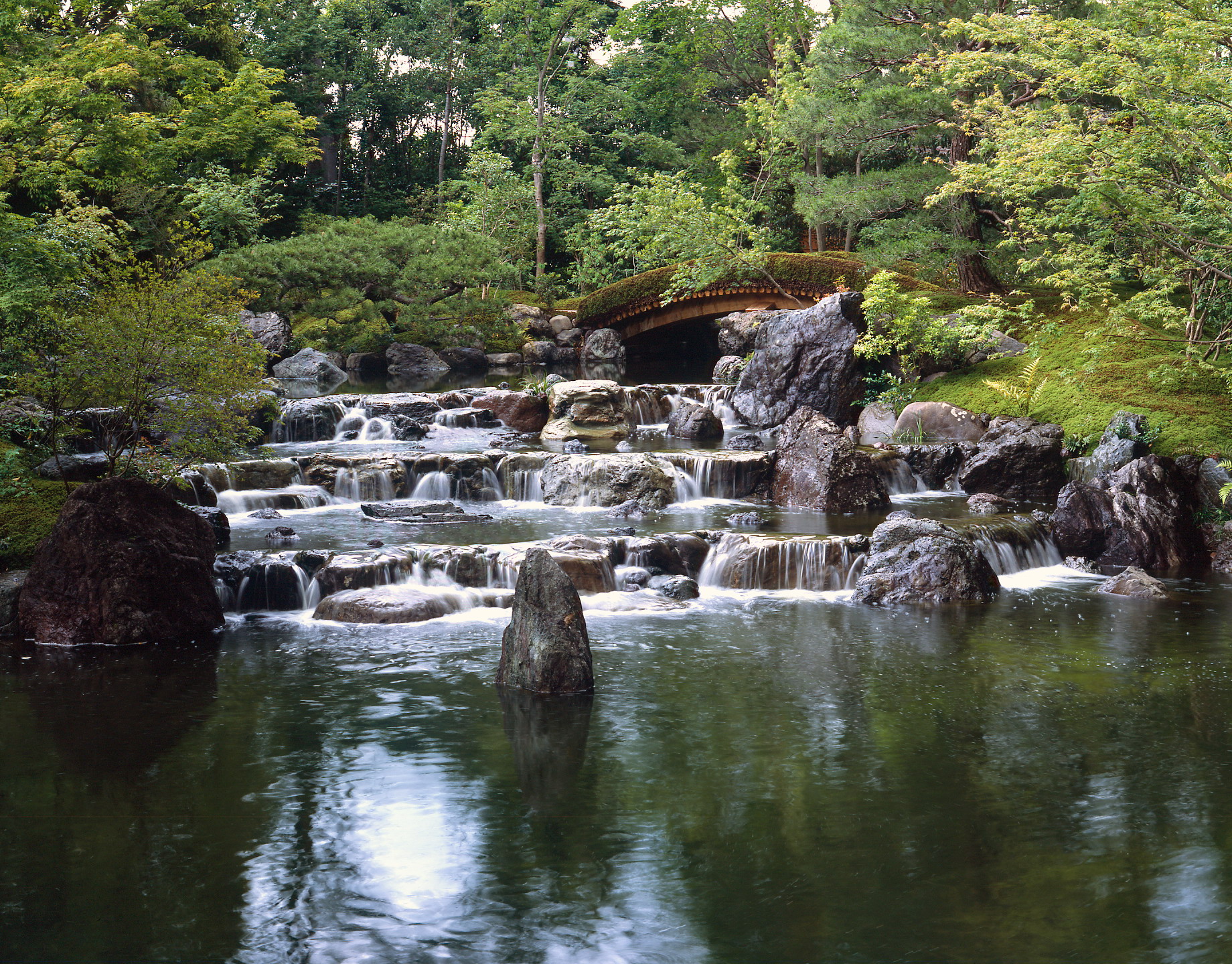 Samukawa shrine garden project. (Shunmyo Masuno)
Samukawa shrine garden project. (Shunmyo Masuno)“The Japanese garden is a very spiritual work of art through which the author is able to express their state of mind. It is an expression of the importance of living in line with the truth of the world and the body itself. It leads to living by working hard on what we can do now and feeling the gratitude of being utilized here,” Masuno said.
“Moreover, those who look at such a garden will receive silent messages from it and will ponder their own life,” Masuno added.
Holding onto the belief that a garden is a place to “contemplate, review and reconsider one’s current situation and life path,” Masuno emphasized the aspects that Japanese gardens philosophical.
“If the viewer just appreciates it quietly as an art space, their mind will be calm, and it will lead to a peaceful state that is scarce in an information-overloaded modern society,” Masuno said.
Therefore, overlooking a Japanese garden almost compels a modern person to pause in order to take a moment of reflection.
As a Zen priest, who builds design concepts based on Zen ideas that help establish peace and harmony, Masuno advises those interested in designing gardens to set a theme prior to making the design concrete.
“The garden ‘Fusuien’ in Berlin, Germany, was designed and created when East and West Germany integrated ten years ago. Even though the ‘two Germanys’ were integrated, there was a big gap between the people of former West Germany and East Germany in terms of the living environment, values, and attitudes towards labor. Therefore, to eliminate the gap between people’s hearts and encourage interaction and understanding, a dry garden that symbolically introduces water was created,” Masuno said.
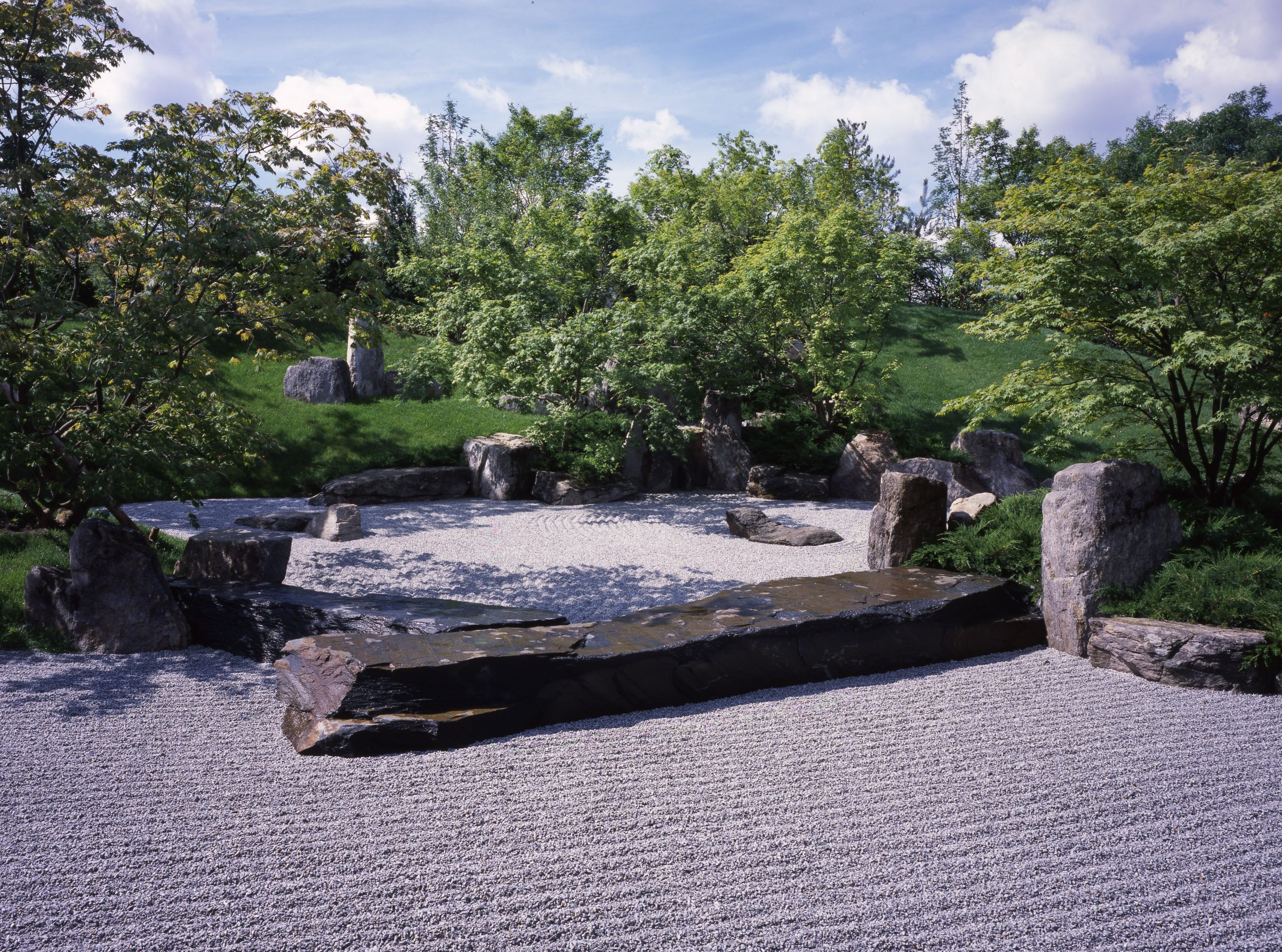 A garden designed by Shunmyo Masuno in Berlin, Germany. (Shunmyo Masuno)
A garden designed by Shunmyo Masuno in Berlin, Germany. (Shunmyo Masuno)Upon being asked how the Gulf region, which has extreme weather conditions, could orchestrate areas that contain beauty similar to that found in Japanese gardens, Masuno answered: “The climate and natural conditions of Dubai and Saudi Arabia are very different from those of Japan. Hence, it is impossible to create a garden similar to that in Japan. However, I think it is possible to create a garden that values spirituality by grasping the local characteristics well and incorporating various conditions. A garden that uses water and greenery would require technological costs to be realized. However, I think it is possible to realize a Japanese garden using ingenuity and wisdom.”
Some of the intelligent initiatives that have been launched in the gulf region are Saudi’s futuristic Line development which spans 170 kilometers, and Dubai’s sustainable urban planning efforts and its developments of sustainable cities are also very worthy to note.
Karesansui (枯山水) is a dry landscape Zen garden that carefully arranges rocks on raked gravel, which symbolizes ripples of water among other elements, suggesting the essence of nature without replicating its exact appearance.
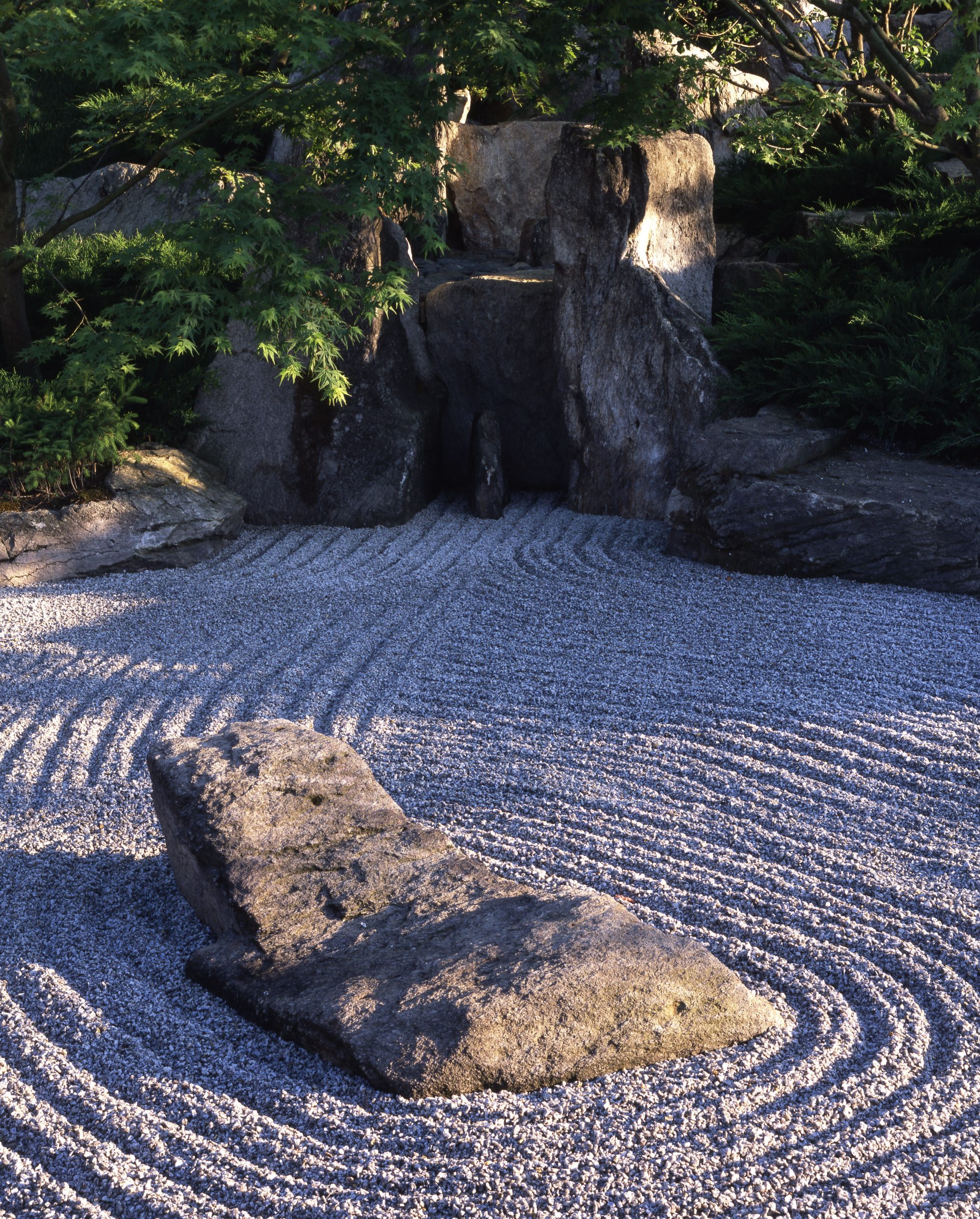 A garden designed by Shunmyo Masuno in Berlin, Germany showing raked gravel which represents the flow of water. (Shunmyo Masuno)
A garden designed by Shunmyo Masuno in Berlin, Germany showing raked gravel which represents the flow of water. (Shunmyo Masuno)“Karesansui using desert sand can only be realized in the Gulf region. However, if the scorching sun and dryness are left as they are, the garden space won’t be sustained. One idea is to create dry landscape gardens in an air-conditioned room. If it is an indoor garden, it makes it more maintainable. In addition, if water is used, great potential will open up both indoors and outdoors,” Masuno said.